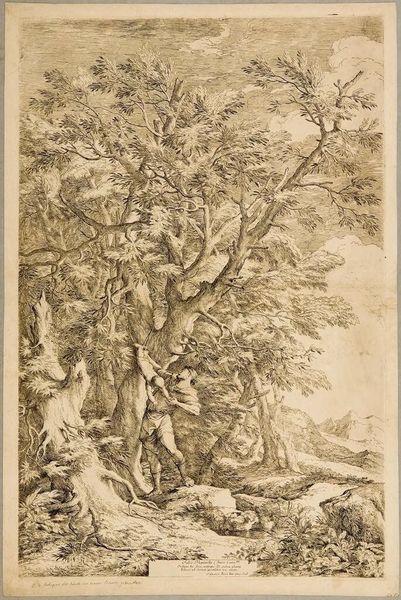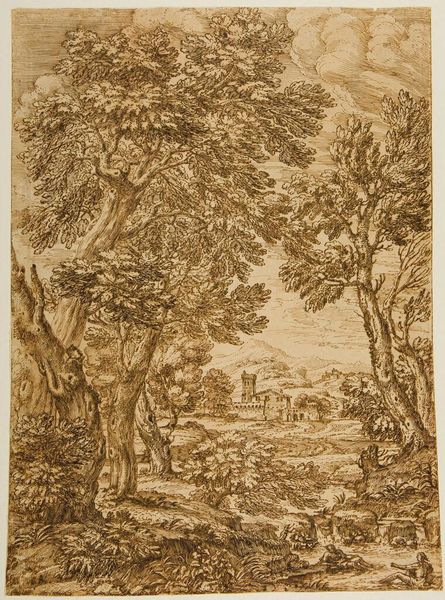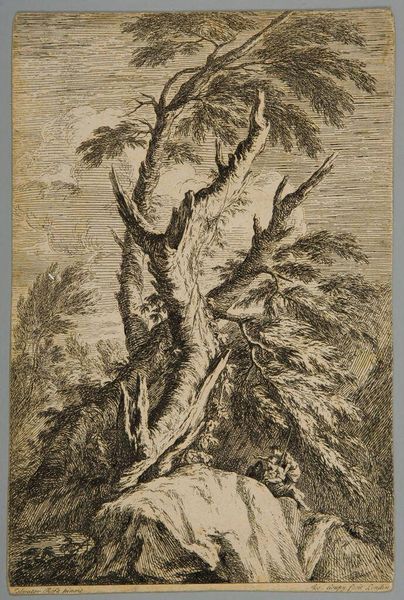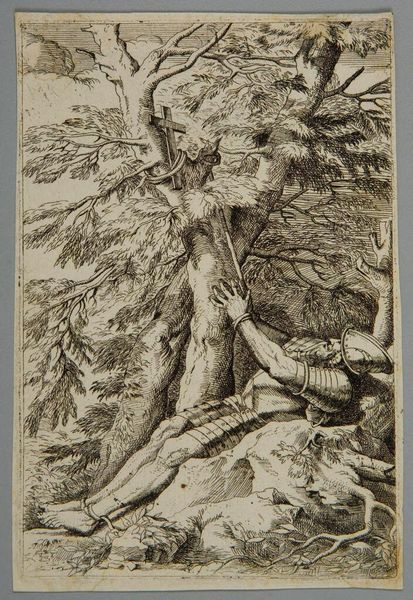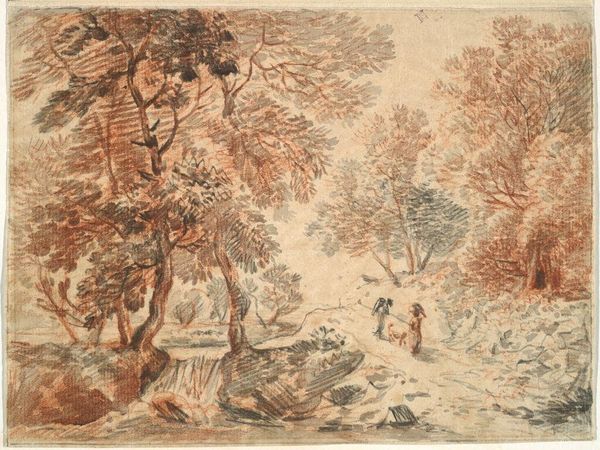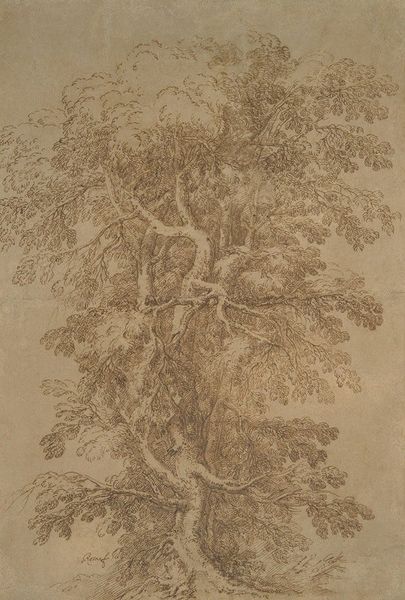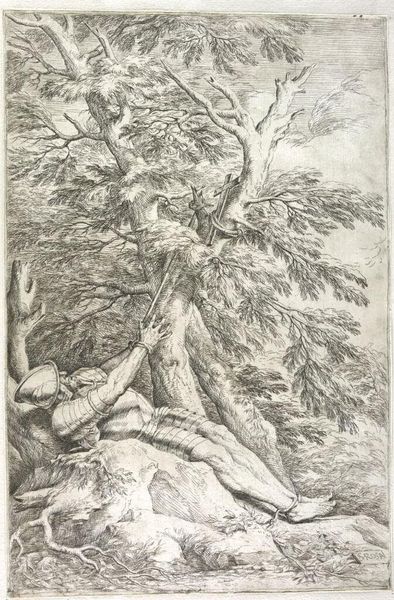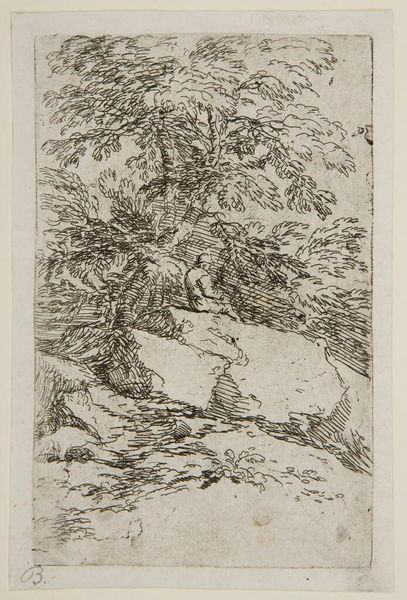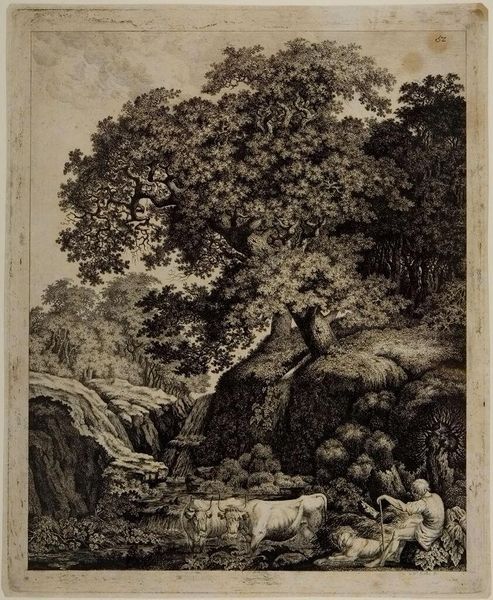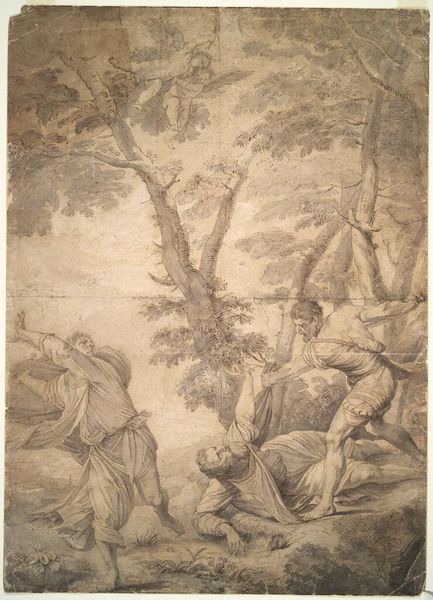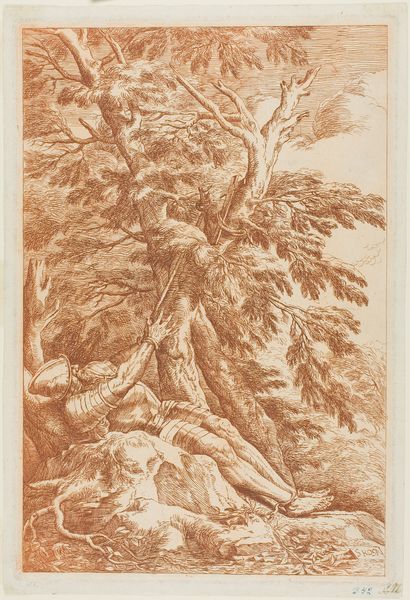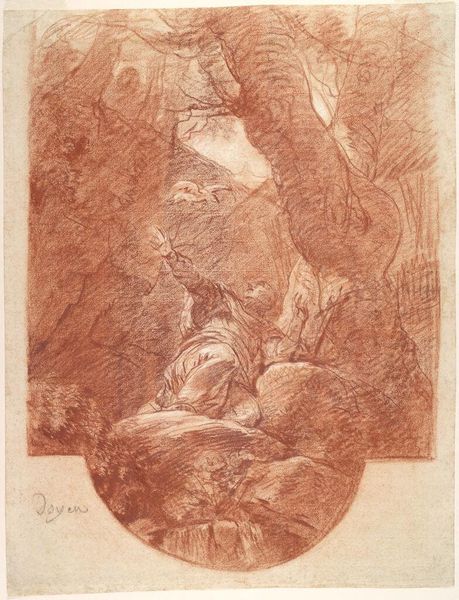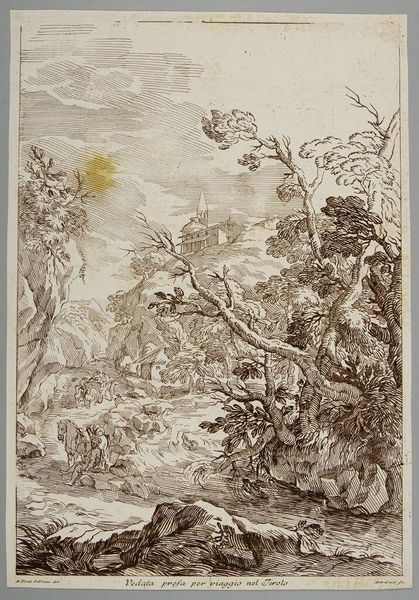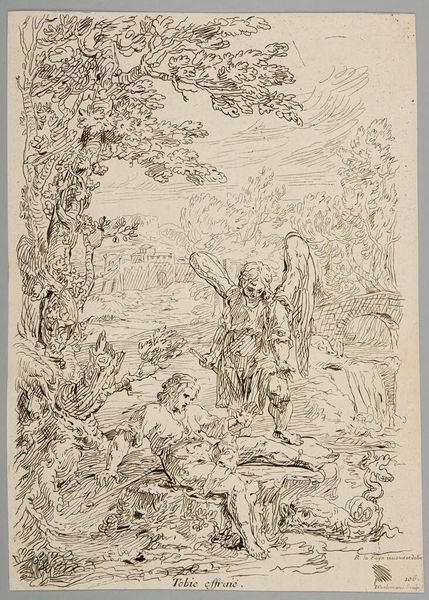
Copyright: CC0 1.0
Editor: This etching by Salvator Rosa depicts the Finding of Oedipus. It's incredibly detailed. What strikes me is the dense forest setting; it feels almost theatrical. How do you interpret this work within its historical context? Curator: Salvator Rosa, active in 17th-century Italy, often explored themes of the sublime and the dramatic. Here, Rosa engages with the classical narrative of Oedipus, placing it within a wild, untamed landscape. Consider how this contrasts with the more ordered landscapes favored by other artists of the period. What could that suggest about the public role of art during that time? Editor: Maybe Rosa is commenting on the unpredictable nature of fate, contrasting human drama with the indifference of nature? Curator: Precisely. And how might the use of etching, a printmaking technique allowing for wide distribution, influence the reception and political implications of the imagery? Editor: I hadn't thought about the political implications of printmaking itself. Curator: Rosa uses his art to engage in social commentary, highlighting themes of fate and power through accessible imagery. Editor: This really highlights how artistic choices can transform even classical tales into powerful statements.
Comments
No comments
Be the first to comment and join the conversation on the ultimate creative platform.
